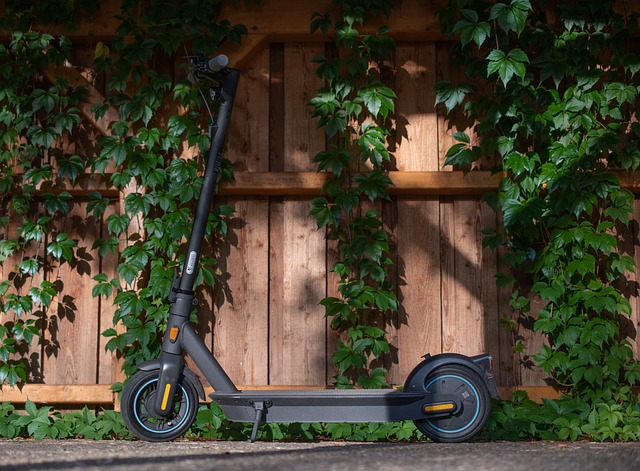Electric Scooters
Electric Scooters for Everyone
Electric scooters have grown exponentially in popularity over the past few years. With the increasing emphasis on sustainable transportation and the convenience they offer, more and more individuals are making the switch to this eco-friendly mode of transport. This article delves into the world of electric scooters, highlighting their benefits, types, key features to consider, and their impact on urban mobility.
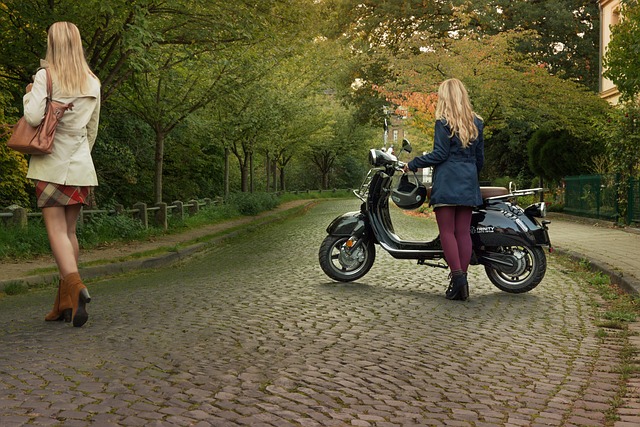
Photo by Trinity_Elektroroller on Pixabay
Benefits of Electric Scooters
Environmental Impact
One of the most significant advantages of electric scooters is their minimal environmental footprint. Unlike traditional vehicles, electric scooters produce zero emissions, making them an excellent choice for reducing air pollution and combating climate change. They run on electric power, which can be sourced from renewable energy, further enhancing their green credentials. By choosing electric scooters over gasoline-powered alternatives, riders contribute to cleaner air and a healthier environment.
Moreover, electric scooters promote the concept of sustainable urban living. Since they don't rely on fossil fuels, they help decrease the overall demand for oil, thus reducing the adverse environmental effects associated with oil extraction and processing. In cities grappling with high levels of pollution, widespread adoption of electric scooters can significantly improve air quality and public health.
In addition to reducing air pollution, electric scooters also contribute to noise pollution reduction. Traditional vehicles generate considerable noise, which can be disruptive in urban areas. Electric scooters, on the other hand, are much quieter, making city streets more pleasant for both residents and pedestrians.
Furthermore, electric scooters support the transition to renewable energy. As the electricity grid becomes greener, with an increasing share of renewable energy sources like wind and solar, the environmental benefits of electric scooters will continue to grow. This alignment with clean energy initiatives makes electric scooters a forward-thinking choice for sustainable urban mobility.
Cost-Effective
Electric scooters are a cost-effective means of transportation. They are generally cheaper to purchase and maintain compared to cars or motorcycles. Additionally, the cost of electricity required to charge them is significantly lower than the cost of gasoline or diesel. For daily commuters, this translates into substantial savings over time.
Maintenance costs for electric scooters are also lower. They have fewer moving parts compared to internal combustion engine vehicles, which means fewer components are prone to wear and tear. This simplicity in design results in less frequent and less expensive repairs, further adding to the cost savings.
Insurance costs for electric scooters are typically lower as well. Given their lower speeds and reduced risk factors compared to cars and motorcycles, insurance premiums for electric scooters are more affordable. This makes them an attractive option for budget-conscious individuals.
Additionally, many cities offer incentives for electric scooter users, such as tax breaks, subsidies, or reduced registration fees. These incentives make electric scooters an even more economical choice, encouraging more people to make the switch.
Convenience and Portability
Electric scooters are incredibly convenient for short commutes. They are lightweight and portable, allowing users to fold them up and carry them into buildings, public transportation, or store them easily at home or in the office. This level of portability is unmatched by other forms of transportation.
Their compact size also makes them ideal for navigating crowded urban environments. Riders can easily weave through traffic, avoid congested areas, and even take shortcuts that larger vehicles cannot. This ability to bypass traffic jams can save significant time during peak commuting hours.
Electric scooters are also easy to park. Unlike cars, which often require finding a parking spot and paying for parking, electric scooters can be stored in small spaces or designated scooter parking areas. This convenience is particularly beneficial in densely populated cities where parking is a constant challenge.
Furthermore, electric scooters offer a hassle-free riding experience. They are easy to operate, with simple controls and intuitive designs. This makes them accessible to a wide range of users, including those who may not have experience with traditional motorcycles or bicycles.
Reduced Traffic Congestion
With more people opting for electric scooters, there is a potential reduction in traffic congestion. Scooters can navigate through traffic more efficiently than cars, and their smaller size means they take up less space on the road. This can lead to a more streamlined flow of traffic in busy urban areas.
Electric scooters encourage a shift towards micromobility, which involves using small, lightweight vehicles for short trips. This shift can alleviate the burden on public transportation systems and reduce the number of cars on the road, ultimately leading to less traffic congestion.
Moreover, electric scooters can complement public transportation systems. Riders can use scooters for the last mile of their journey, bridging the gap between public transit stops and their final destinations. This integration can make public transportation more appealing and effective, reducing the reliance on personal cars.
In cities with high population densities, the widespread adoption of electric scooters can significantly mitigate traffic congestion. By providing an efficient and space-saving mode of transportation, electric scooters contribute to smoother and faster commutes for everyone.
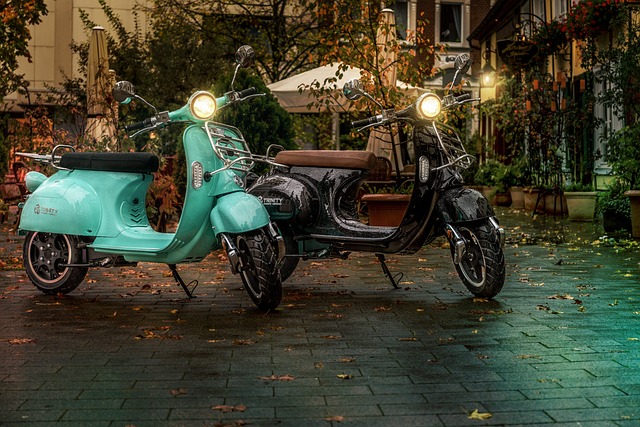
Photo by Trinity_Elektroroller on Pixabay
Types of Electric Scooters
Commuter Scooters
**
**
Commuter scooters are the most common type of electric scooters, designed specifically for daily commuting. They typically have a moderate speed range and are equipped with features like lights, reflectors, and sometimes even small storage compartments. These scooters are perfect for city dwellers who need a reliable and efficient way to get to work or run errands.
Commuter scooters are designed with urban environments in mind. They often feature puncture-resistant tires and suspension systems that can handle the occasional pothole or uneven pavement. This ensures a smooth and comfortable ride, even on less-than-ideal road surfaces.
Another key feature of commuter scooters is their battery life. These scooters are built to provide sufficient range for daily commutes, ensuring that riders can travel to and from their destinations without worrying about running out of battery power. Many models also offer fast-charging capabilities, allowing users to quickly recharge their scooters during the day.
Additionally, commuter scooters often come with smart features such as Bluetooth connectivity, GPS tracking, and mobile apps. These features enhance the overall riding experience by providing navigation assistance, ride statistics, and security alerts.
Off-Road Scooters
**
**
Off-road scooters are built for rugged terrains. They have larger, more durable tires, robust suspension systems, and powerful motors to handle uneven surfaces and inclines. These scooters are ideal for adventure enthusiasts who enjoy exploring trails, dirt paths, and other off-road environments.
The tires on off-road scooters are typically wider and have deeper treads compared to commuter scooters. This design provides better traction and stability on loose or uneven surfaces, such as gravel, sand, or mud. The robust suspension systems help absorb shocks and vibrations, ensuring a smooth ride even on bumpy terrains.
Off-road scooters also feature more powerful motors, which provide the necessary torque to climb steep inclines and navigate challenging landscapes. These motors are often paired with larger battery packs to ensure that the scooter can handle long-distance off-road rides without running out of power.
Durability is a key consideration for off-road scooters. They are built with rugged frames and components that can withstand the rigors of off-road riding. This includes reinforced decks, heavy-duty brakes, and water-resistant electronics to protect against dust, dirt, and moisture.
Performance Scooters
Performance scooters are designed for speed enthusiasts. They boast high top speeds and quick acceleration, making them ideal for thrill-seekers who enjoy a fast-paced ride. These scooters are often equipped with advanced features and high-end components to deliver an exhilarating riding experience.
The motors in performance scooters are significantly more powerful than those in commuter or off-road scooters. This allows them to achieve impressive speeds and provide rapid acceleration. Riders can enjoy the thrill of zipping through city streets or open roads with ease.
To handle the increased speeds, performance scooters are equipped with advanced braking systems, such as disc brakes or regenerative braking. These systems provide reliable stopping power, ensuring rider safety even at high speeds. Some models also feature anti-lock braking systems (ABS) for added control and stability.
Performance scooters often come with premium features such as high-resolution displays, customizable ride modes, and advanced suspension systems. These features enhance the overall riding experience, allowing riders to tailor their rides to their preferences and conditions.
Folding Scooters
Folding scooters prioritize portability. They are designed to be easily collapsible, allowing users to carry them on public transportation or store them in small spaces. This makes them an excellent choice for commuters who need a flexible and convenient mode of transportation.
The folding mechanism in these scooters is typically quick and easy to use, enabling riders to fold and unfold their scooters within seconds. This convenience makes it easy to transition between riding and carrying the scooter, whether on a bus, train, or in an office building.
Folding scooters are often lightweight, with frames made from materials such as aluminum or carbon fiber. This reduces the overall weight of the scooter, making it easier to carry and maneuver. Despite their lightweight design, these scooters are built to be durable and reliable.
Storage is another advantage of folding scooters. When not in use, they can be compactly folded and stored in small spaces such as closets, under desks, or in car trunks. This is particularly beneficial for individuals with limited storage space at home or work.
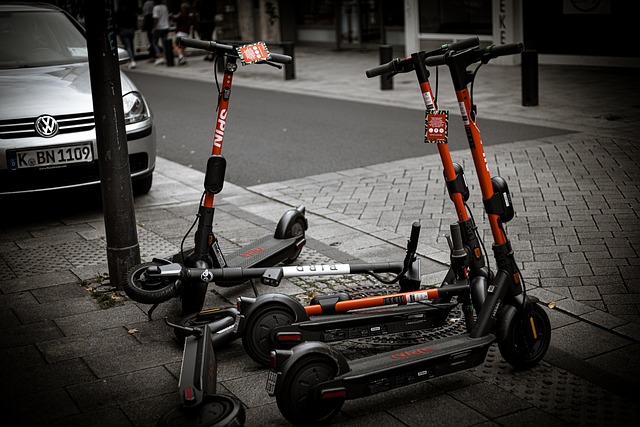
Photo by doosenwhacker on Pixabay
Key Features to Consider
Battery Life and Range
Battery life is a crucial factor when choosing an electric scooter. It determines how long the scooter can run on a single charge. The range, or the distance the scooter can travel before needing a recharge, is also essential, especially for those who plan to use it for longer commutes. Understanding these aspects can help users select a scooter that meets their specific needs.
When evaluating battery life and range, it's important to consider the battery capacity, typically measured in watt-hours (Wh). A higher capacity battery generally provides a longer range. However, factors such as rider weight, terrain, and riding style can also affect the actual range. Users should consider these variables to ensure the scooter meets their daily commuting needs.
Charging time is another consideration. Some scooters offer fast-charging options, reducing the time required to recharge the battery. This can be particularly useful for individuals with busy schedules who need their scooter ready to go at a moment's notice.
Battery technology has advanced significantly in recent years, with many scooters now featuring lithium-ion batteries. These batteries are lightweight, have a high energy density, and offer longer lifespans compared to older battery types. Investing in a scooter with a high-quality battery can provide better performance and reliability over the long term.
Motor Power
The motor's power affects the scooter's speed and its ability to handle inclines. Scooters with higher wattage motors will generally be faster and more capable of climbing hills, but they may also consume more battery power. Understanding motor specifications can help users select a scooter that aligns with their performance expectations.
Motor power is usually measured in watts (W). Entry-level scooters may have motors with around 250W, suitable for flat terrains and moderate speeds. For riders seeking higher speeds and better hill-climbing capabilities, motors with 500W or more are recommended. Performance scooters can have motors exceeding 1000W, providing exceptional speed and acceleration.
Dual-motor setups are also available in some high-performance scooters. These configurations offer enhanced power and traction, making them ideal for off-road or demanding urban environments. However, dual-motor scooters may have higher energy consumption, which can impact battery life and range.
It's important to balance motor power with other factors such as battery capacity and overall scooter weight. A more powerful motor can enhance the riding experience, but it should be matched with a suitable battery and robust build to ensure optimal performance and safety.
Weight Capacity
It's important to check the weight capacity of an electric scooter to ensure it can safely support the rider. Exceeding the weight limit can affect the scooter's performance and longevity. Understanding weight capacity can help users select a scooter that meets their specific needs and ensures a safe and comfortable ride.
Weight capacity is typically specified by the manufacturer and can vary widely between different scooter models. Entry-level scooters may have a weight capacity of around 220 pounds (100 kg), while more robust models can support up to 300 pounds (136 kg) or more. Riders should choose a scooter that comfortably accommodates their weight, including any additional items they may carry.
Exceeding the weight capacity can lead to several issues, including reduced speed, decreased battery life, and increased wear and tear on components such as tires, suspension, and the motor. In extreme cases, it can also compromise the structural integrity of the scooter, posing safety risks.
For heavier riders, it's advisable to select a scooter with a higher weight capacity and reinforced components. These scooters are designed to handle the additional load without compromising performance or safety. Additionally, heavier riders should consider scooters with larger wheels and robust suspension systems for a smoother and more stable ride.
Safety Features
Safety should always be a priority. Look for scooters equipped with reliable braking systems, lights, and reflectors. Some models also come with advanced features like anti-lock brakes and regenerative braking systems. Understanding the importance of safety features can help users choose a scooter that provides a secure and confident riding experience.
Braking systems are a critical safety component. Electric scooters typically feature either disc brakes, drum brakes, or electronic braking systems. Disc brakes are known for their strong stopping power and reliability, making them a popular choice for many scooters. Electronic braking systems, such as regenerative braking, can help recharge the battery while slowing down the scooter, providing an added benefit.
Lighting is another essential safety feature. Scooters should be equipped with bright front and rear lights to ensure visibility during low-light conditions. Reflectors and side lights can further enhance visibility, making the rider more noticeable to other road users. Some scooters also offer customizable lighting options, allowing riders to adjust the brightness and color of the lights.
Additional safety features to consider include anti-lock braking systems (ABS), which prevent wheel lock-up during sudden stops, and turn signals for indicating direction changes. High-quality tires with good traction and durability are also important, as they contribute to overall stability and control.
Riders should also consider wearing appropriate safety gear, such as helmets, gloves, and knee pads, to further protect themselves in case of accidents. Understanding and prioritizing safety features can significantly enhance the riding experience and reduce the risk of injuries.
Build Quality
The build quality of an electric scooter affects its durability and reliability. Opt for models made with high-quality materials like aluminum or carbon fiber, which offer a good balance of strength and weight. Understanding the importance of build quality can help users choose a scooter that withstands daily use and provides long-lasting performance.
Frame construction is a key aspect of build quality. Aluminum frames are popular for their lightweight and corrosion-resistant properties, making them ideal for urban commuting. Carbon fiber frames, although more expensive, offer superior strength and weight reduction, providing a premium riding experience.
The quality of components such as the deck, handlebars, and wheels also plays a crucial role. A sturdy deck made from high-quality materials ensures stability and support, while ergonomic handlebars with comfortable grips enhance rider control and comfort. High-quality wheels with good traction and durability contribute to a smoother and safer ride.
Water resistance is another consideration for build quality. Many scooters feature water-resistant designs, protecting the electronics and components from moisture and dust. This is particularly important for riders who may encounter wet or rainy conditions during their commutes.
Manufacturers often provide warranties and customer support, reflecting their confidence in the build quality of their products. It's advisable to choose scooters from reputable brands with positive reviews and reliable customer service. Investing in a well-built scooter can ensure a satisfying and trouble-free riding experience.

Photo by dmncwndrlch on Pixabay
The Impact of Electric Scooters on Urban Mobility
Micromobility Solutions
Electric scooters are part of the broader micromobility trend, which includes other small, lightweight vehicles like e-bikes and hoverboards. They offer flexible, on-demand transportation solutions that bridge the gap between public transit and personal vehicles. Understanding the role of micromobility can help users appreciate the broader impact of electric scooters on urban mobility.
Micromobility solutions address the last mile problem, providing convenient transportation options for short trips that are too long to walk but too short to drive. Electric scooters can be easily integrated into daily commutes, allowing riders to travel from their homes to public transit stations or directly to their destinations.
The rise of scooter-sharing services has further popularized micromobility. These services offer electric scooters for rent on a per-minute or per-mile basis, providing affordable and flexible transportation options. Users can locate and unlock scooters using mobile apps, making it easy to find a scooter when needed.
Micromobility solutions contribute to reducing traffic congestion and pollution in urban areas. By offering an alternative to car trips, electric scooters help decrease the number of vehicles on the road, leading to smoother traffic flow and improved air quality. This shift towards micromobility aligns with the goals of sustainable urban development.
Reduced Carbon Footprint
By opting for electric scooters over traditional gasoline-powered vehicles, urban dwellers can significantly reduce their carbon footprint. This shift is essential for cities aiming to meet their sustainability goals. Understanding the environmental benefits of electric scooters can help users contribute to a greener and more sustainable future.
Electric scooters produce zero tailpipe emissions, reducing the levels of harmful pollutants such as carbon dioxide (CO2), nitrogen oxides (NOx), and particulate matter (PM). This reduction in emissions contributes to cleaner air and improved public health, particularly in densely populated urban areas.
The use of electric scooters also supports the transition to renewable energy sources. As the electricity grid becomes greener, with an increasing share of renewable energy, the environmental benefits of electric scooters will continue to grow. Riders can further enhance their positive impact by charging their scooters using green energy options, such as solar or wind power.
In addition to reducing emissions, electric scooters contribute to lower energy consumption. They are highly efficient, converting a significant portion of the electrical energy into movement. This efficiency results in lower overall energy use compared to traditional vehicles, which lose a substantial amount of energy as heat and friction.
Alleviating Public Transit Burden
Electric scooters provide an alternative to crowded public transportation systems, especially during peak hours. This can ease the burden on buses and trains, making public transit more efficient for those who rely on it. Understanding the role of electric scooters in complementing public transit can help users appreciate their contribution to urban mobility.
During peak commuting times, public transportation systems often experience overcrowding, leading to discomfort and delays for passengers. Electric scooters offer a convenient solution for short trips, allowing riders to bypass crowded buses and trains. This can lead to a more pleasant and efficient commuting experience for everyone.
Scooter-sharing services have made it easier for individuals to access electric scooters for their daily commutes. By offering scooters at strategic locations, such as near transit stations and busy intersections, these services provide a seamless connection between different modes of transportation. This integration enhances the overall efficiency of the urban transportation network.
Electric scooters also promote multimodal transportation, encouraging individuals to combine different modes of travel for their commutes. For example, a rider might use an electric scooter to travel to a transit station, take a train for the main part of their journey, and then use another scooter to reach their final destination. This flexibility can make public transit more appealing and accessible.
Economic Benefits
The rise of electric scooters has also created new economic opportunities. Companies offering scooter-sharing services have emerged, providing jobs and contributing to local economies. Understanding the economic impact of electric scooters can help users appreciate their broader benefits to society.
Scooter-sharing services have led to the creation of various job opportunities, including roles in scooter maintenance, operations, customer support, and app development. These jobs contribute to local employment and support the growth of the micromobility industry.
In addition to job creation, electric scooters have economic benefits for riders. By offering an affordable and efficient mode of transportation, electric scooters can reduce commuting costs for individuals. This can lead to increased disposable income, which can be spent on other goods and services, stimulating the local economy.
Electric scooters also support local businesses by increasing accessibility. Riders can easily travel to nearby shops, restaurants, and attractions, boosting foot traffic and sales. This increased accessibility can help small businesses thrive and contribute to the vibrancy of urban neighborhoods.
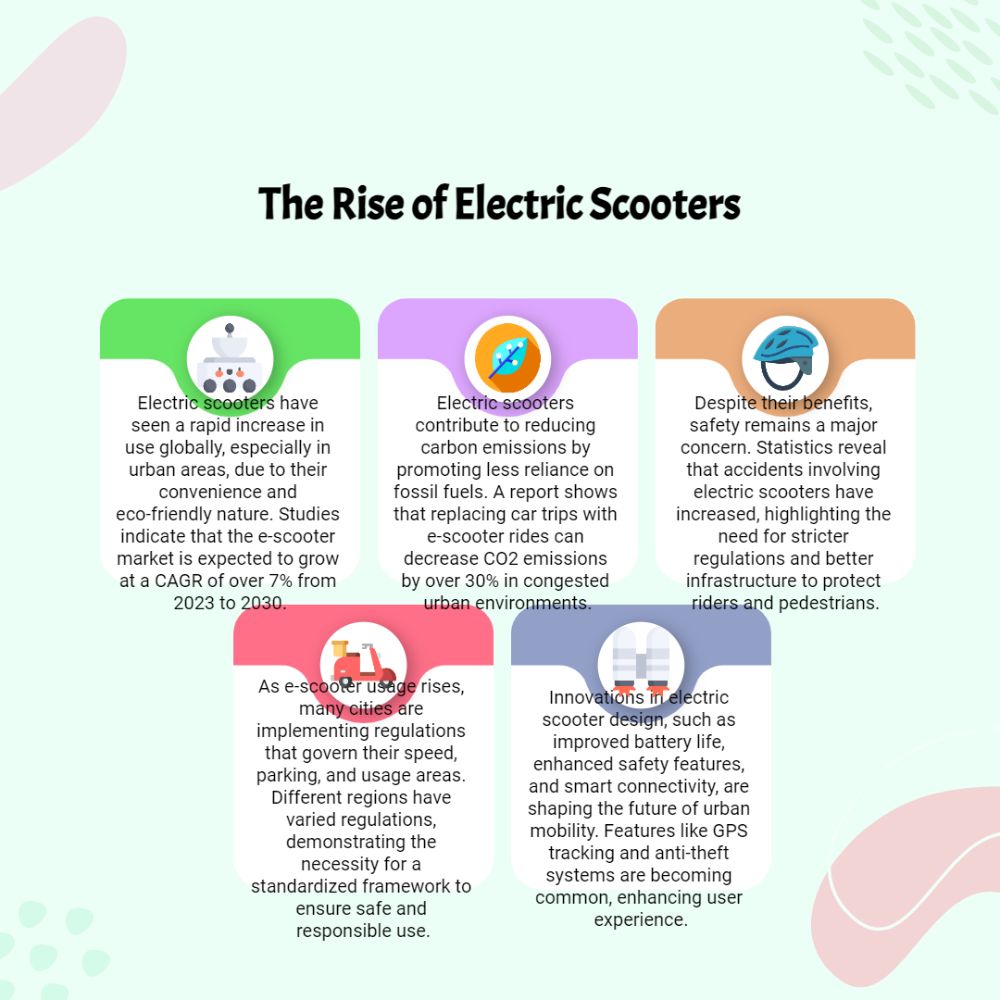
FAQs
1. Are electric scooters eco-friendly? - Yes, electric scooters are powered by rechargeable batteries, making them a more environmentally-friendly alternative to traditional gas-powered vehicles.
2. Are electric scooters cost-effective? - Yes, electric scooters are cost-effective as they offer a more affordable and budget-friendly transportation option compared to owning a car.
3. How do electric scooters work? - Electric scooters are powered by an electric motor connected to a rechargeable battery. The motor kicks in when you kick off from the ground, propelling you forward.
4. What should I consider when choosing an electric scooter? - When choosing an electric scooter, consider your needs, the range and battery life, weight capacity, portability, and safety features to ensure it fits your lifestyle and preferences.
In conclusion, electric scooters offer a convenient, eco-friendly, and cost-effective mode of transportation for commuters and leisure riders alike. By following these tips and considering your needs, you can choose the right electric scooter that fits your lifestyle and preferences.
Enjoy the freedom and fun of riding an electric scooter while doing your part to protect the environment.
Recommended Website - Electric Scooter Reviews
I may earn from qualifying purchases through these links, at no extra cost to you. Thanks for your time!
Other Posts
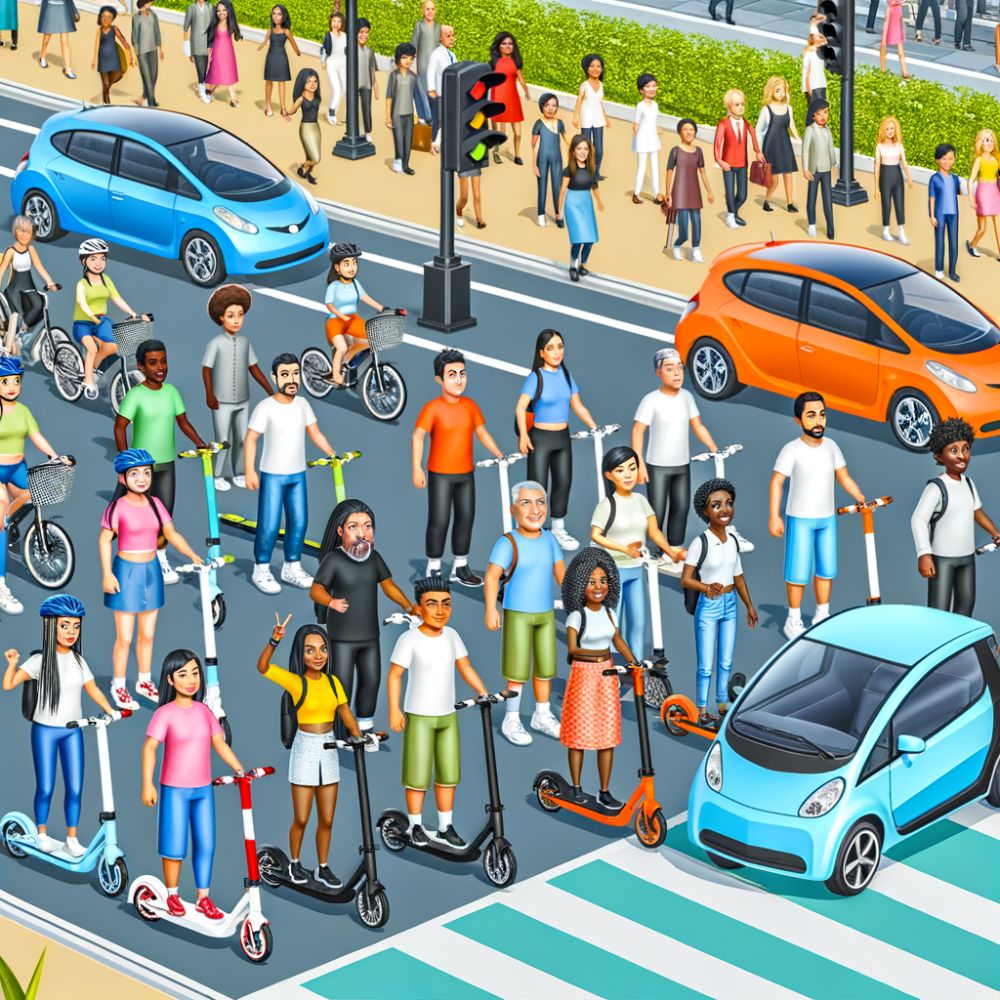
Welcome To Electric-Reviews!
electric-reviews

Electric Scooters for Adults
Electric scooters have become increasingly popular among adults for their convenience and eco-friendly nature. With so many options on the market, i...
